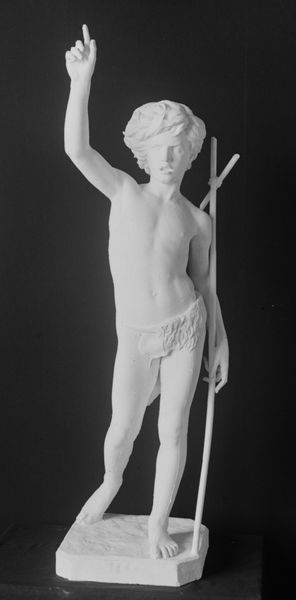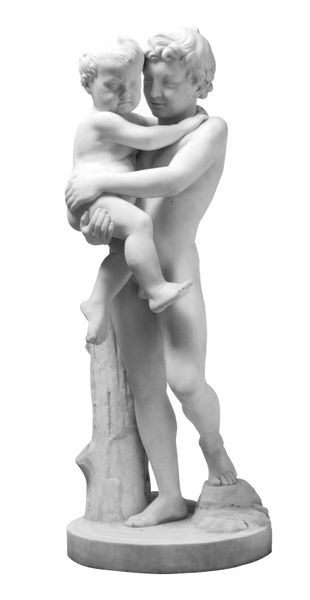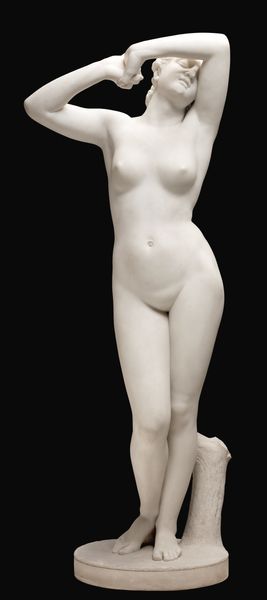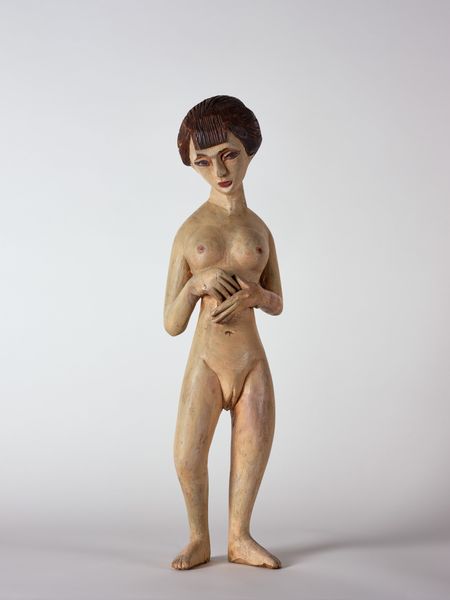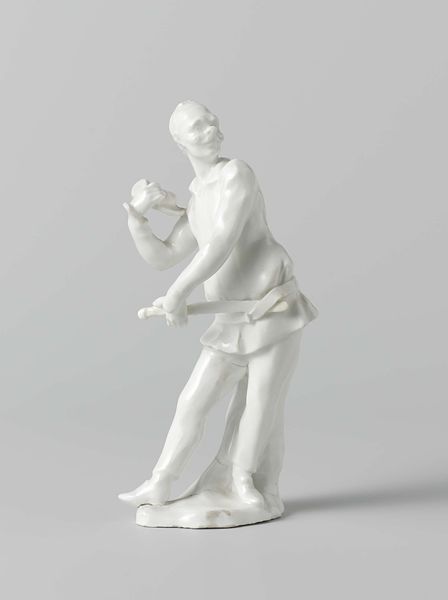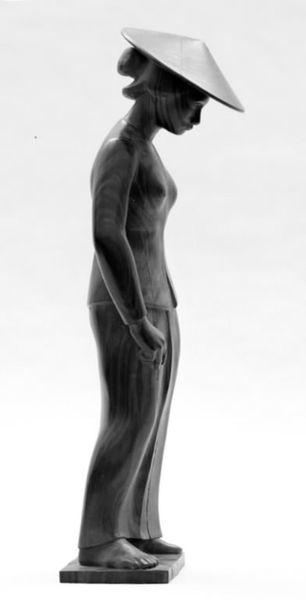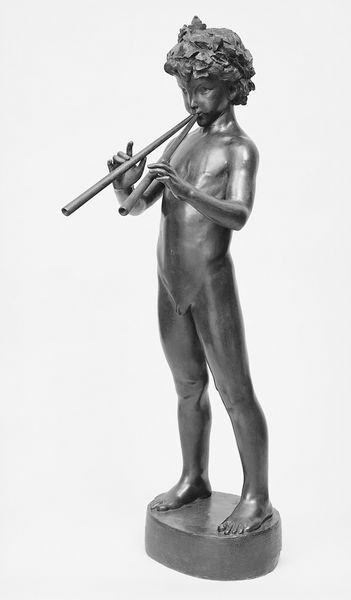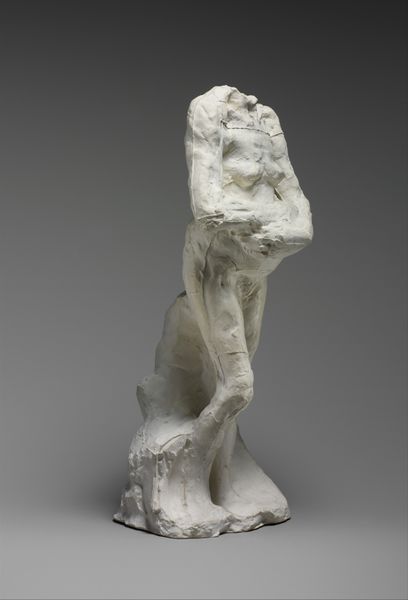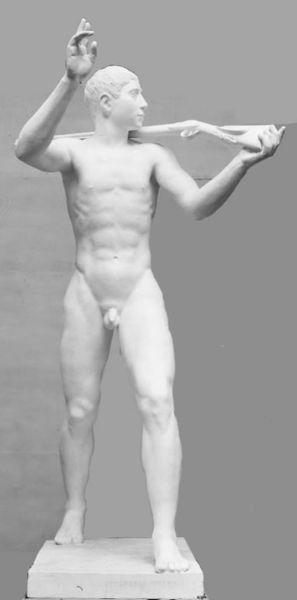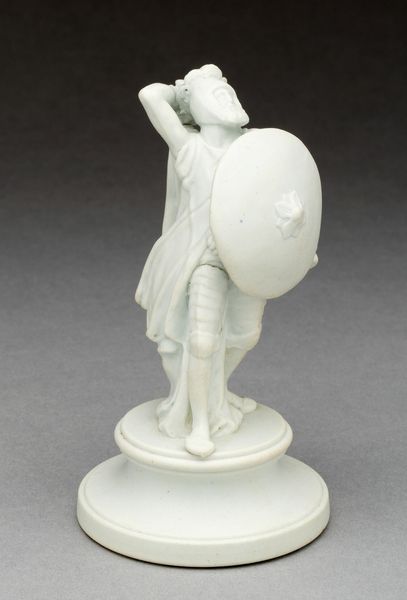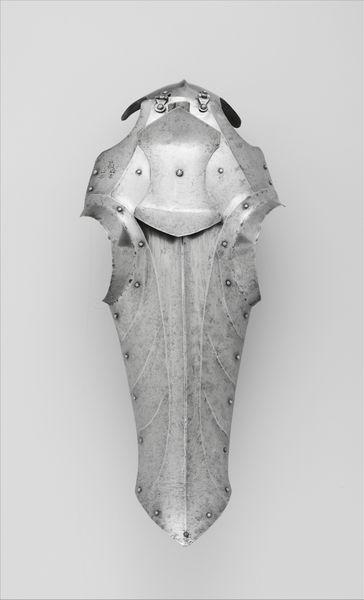
bronze, sculpture
#
portrait
#
neoclassicism
#
sculpture
#
bronze
#
figuration
#
sculpture
#
genre-painting
#
decorative-art
Dimensions: No dimensions recorded
Copyright: Public Domain
Editor: Here we have Paul Dubois's "Florentine Singer," a bronze sculpture created in 1865. The figure's poise and expression are striking. How do you interpret this work? Curator: Immediately, I see a deliberate construction of cultural memory. This isn't just a portrait; it's a carefully chosen representation invoking the spirit of the Renaissance. What’s interesting is to unpack what a "Florentine Singer" signified to Dubois and his audience. What iconography is he leveraging? Editor: The costume, maybe? It seems idealized, more theatrical than everyday wear. Curator: Precisely! Think of the hat, the close-fitting garment, the mandolin. Each element carries its own weight. The mandolin, of course, is an instrument of courtly love and entertainment, instantly placing him within a tradition. It’s not just decorative; it speaks to the sitter's identity. Editor: So, he’s crafting a narrative? Curator: Absolutely. Dubois is consciously creating an image rooted in romantic notions of the past. The smooth bronze, almost flawless, further idealizes him. Consider, what stories were people telling themselves about the Renaissance in 1865? What needs were these images fulfilling? Editor: That makes a lot of sense. It's less about historical accuracy and more about conjuring a specific feeling. I’d always just seen it as a decorative piece. Curator: Indeed. This sculpture reflects not just the period it depicts, but also the desires and values of the era in which it was made. Looking at the details reveals those longings and constructed memories, making the figure more relatable. Editor: Thanks, I'm looking at it very differently now.
Comments
No comments
Be the first to comment and join the conversation on the ultimate creative platform.
